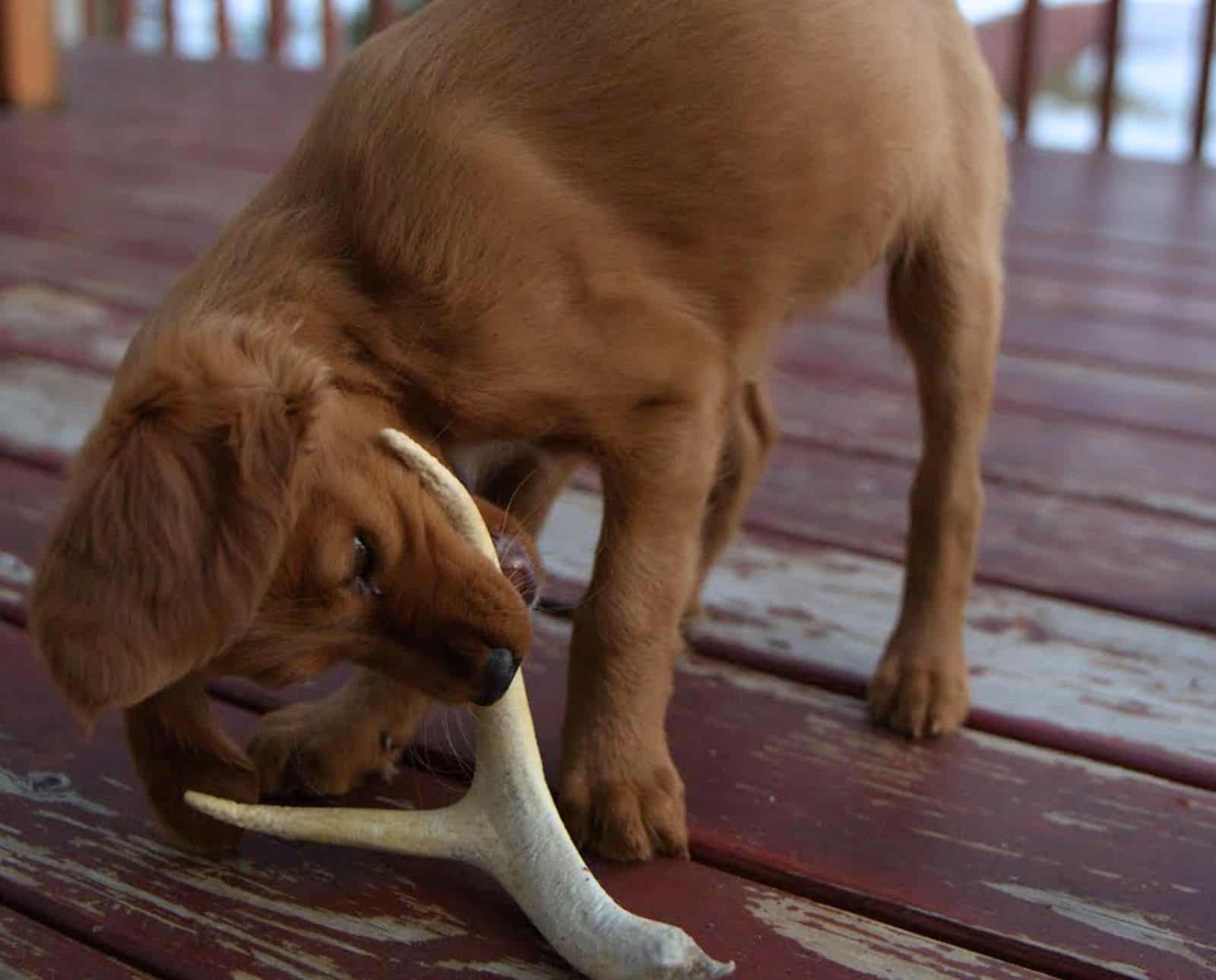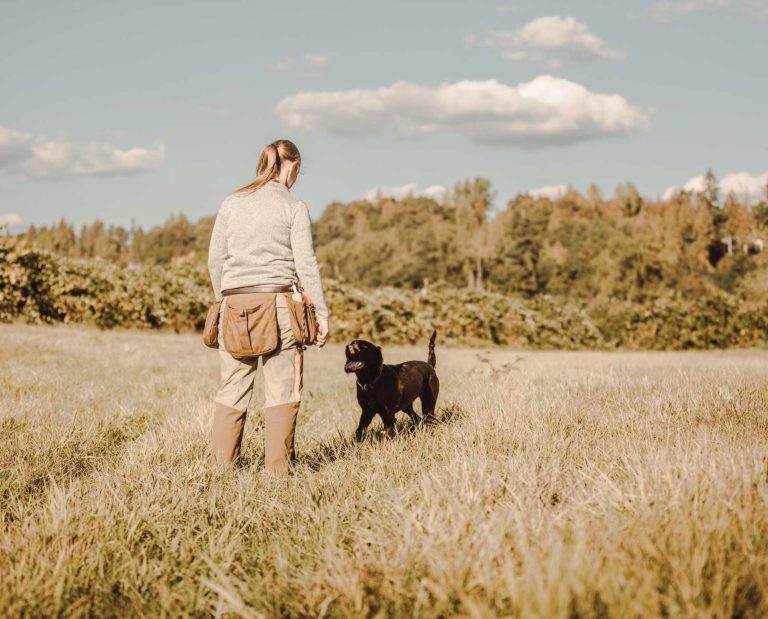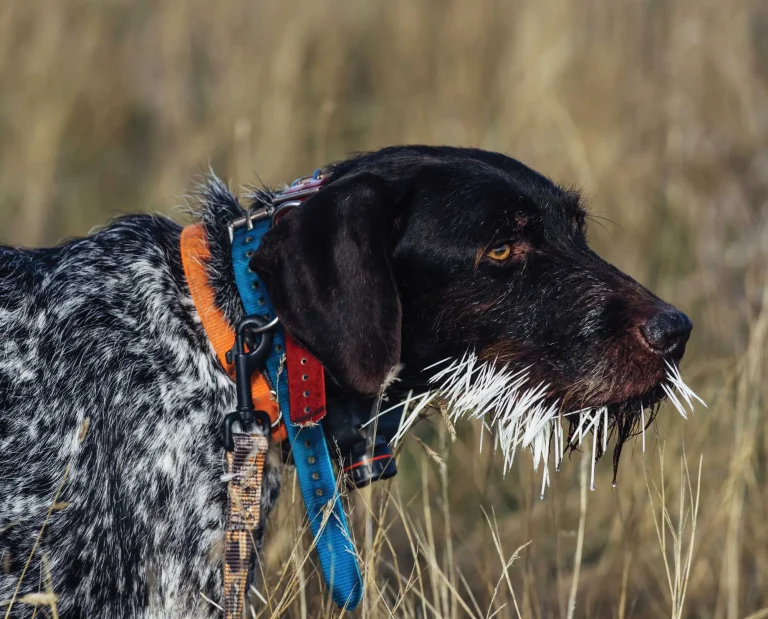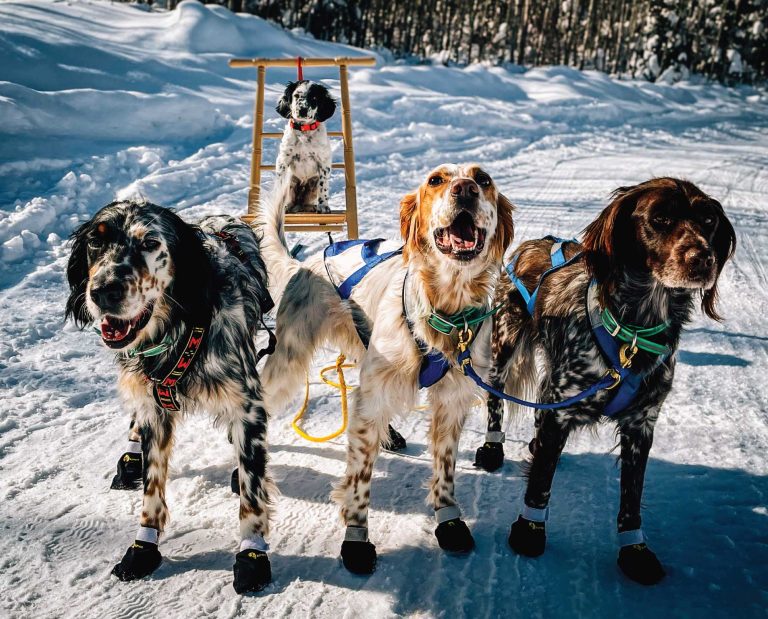Emotional Dysregulation in Dogs and Puppies: Helping Dogs Stuck in “Drive” to Relax and Self-Regulate

Techniques and strategies for shifting excitable, anxious, and emotionally dysregulated dogs into “neutral.”
Most of us have experienced a situation where someone’s level-headed thinking helped bring a sense of balance back into our lives. Like a diesel truck shifted into drive, we were ready to power straight through the problem. But cooler heads throttled us down and shifted us back into neutral. Like people, puppies have similar emotions and the ability (or lack thereof) to regulate them.
Puppies can be characterized by intense emotional responses to stimuli, excitability, stubbornness, and relentless misbehavior. No matter how much training, exercise, and stimulation you provide, puppies seem to always be in drive. Getting them to relax and have a calm state of mind seems to only be accomplished through sleep.
If you’re wondering how to calm an excitable or anxious puppy, you are not alone—many owners face this challenge. Thankfully, there are calming techniques and strategies that can help bring our dogs back to a calm and stable state during training and in the home.
Understanding How Dogs Use Their Senses
During the quest to develop the bird dogs of our dreams, folks tend to get a bit over-excited. This is often characterized by being repetitively loud and commanding and presenting a heightened energy around the dog. Dogs respond to our emotions in a like minded-way. They become dysregulated, incapable of settling or returning to neutral.
Dogs interact with their world starting with their nose, then their eyes, and their ears last. Dog owners inherently want to interact with their pups in ways that work best for humans, which just so happens to be the polar opposite of how dogs operate. We want our dogs to listen to us first, then to make eye contact with us. We also completely disregard their sense of smell.

How We Unintentionally Keep Our Dogs “In Drive”
Insisting a dog perform for us for a sustained period of time can create nervous energy and anxiety. Some folks over-train and attempt to hurry along the pup’s development. Nervous, anxious dogs will also struggle to settle. These dogs are in perpetual states of unrest, never learning to self-soothe or quiet themselves. The lack of self-regulation gets in the way of helping the dog find neutral; it creates a busy, anxious pup. In other words, these dogs are kept in drive, or in a heightened mental state, all the time.
Owners are typically very good at rewarding and punishing behaviors from their dogs. They can excitedly send the dog chasing a toy, rough house on the floor, or spoil the dog with hugs and kisses. They can show displeasure and punish wayward behaviors. If their dog is overly excited, they depreciate the excitement with pressure. If the dog is displaying sensitivity, they shower the dog with love and attention, essentially rewarding the dog for being in a state of dysregulation. This can lead a dog down a road filled with highs and lows. They may never truly find that calm, neutral mindset we desire from them.
If our dogs live indoors, we expect them to remain in a neutral state. Being a good citizen in the home requires the dog to be able to relax and settle. In all the training methods we read about, very little is said about the importance of getting your dog out of drive and into the neutral state also known as “the off switch.” Truthfully, the ability to de-escalate a dog is something often undervalued in dog training altogether.
Techniques For Teaching Dogs To Emotionally Self-Regulate
Helping your pup self-regulate and settle down will benefit you both. Thankfully, there are a number of techniques to achieve neutrality in our dogs. I will discuss three common techniques below.
The Chain Gang
The most popular and well-known approach is called the chain gang. The idea is that the limits of the chain gang or tie out makes anxious behaviors (barking and whining) ineffective and inefficient ways of getting what the dog wants.
The chain gang is a long chain secured to a tree or stake at either end where a single dog or multiple dogs can remain secure and comfortable on a line. Dogs that are acting out remain on the line until they are patiently waiting. Though the dog may initially fight the restraint, it will eventually learn to self-soothe and return itself to a neutral or calm state.
Some dogs take to the system quickly, but most require a bit of time to learn that settling gets them off the chain. For the more dysregulated dogs, they may require us to intervene to enforce calm behavior on the line. Given enough time, most dogs learn to accept the limits the chain gang provides, setting the stage for acceptance of other limits found throughout your training.
Keep Yourself In Neutral
Another technique that gets your dog into a neutral state is providing the dog with leadership that is void of emotions. By doing so, we lead by example by keeping ourselves in neutral. But doing so is easier said than done.
As we work with our dogs, we tend to get emotionally invested in training. Our emotions get communicated in so many subtle ways, most of which are oblivious to us. Examples include tightening on the lead, changes in breathing patterns, stiffening gestures, intense stares, and tonal changes in our commands. These are all recognized by and elicit reactions from our dogs.
It’s nearly impossible to hide our emotions, which is why we need to only train when we are calm. This is a common problem where the dog gets boxed in by your strong emotions and feels it can’t escape. As a result, the handler inadvertently loses the dog’s trust. The impact of emotional training has severe ramifications which can impact both short- and long-term learning. When handlers feel overly emotional, it’s best just to call it a day and try again another time.
Maintaining Routines and Rituals
Setting situational expectations and holding the dog to them allow the dog to know how to mentally prepare itself when faced with similar situations. Maintaining these rituals creates routines, which lead dogs away from stress and shift them towards a neutral mindset.
For example, the dog knows that car rides are done quietly in its crate. Laying quietly on its dog bed is required before meeting guests in the home. Waiting quietly for food, to go out a door, and to get out of the kennel are routine behaviors that get the dog what it wants. Rough and tumble play happens outdoors and is not allowed in the home. All of these expectations promote the neutrality and balance we need for steadiness in the field.
Ignoring Attention-Seeking Behaviors
Some behaviors we need to ignore or place on extinction, or stop reinforcing a previously reinforced behavior, for them to go away. Attention-seeking behaviors such as jumping, excessive licking, or barking can be maintained by our attention to them. Through denying the dog what it seeks, the frequency of those behaviors diminish. In time, they should hopefully vanish all together. As a result, the dog is forced to learn other ways to get our attention.
At this point, we can then teach the dog that if it wants our attention, it must first greet us in an acceptable way such as making eye contact and waiting patiently. If we become emotionally heightened by the dog’s behavior and respond aggressively, it can generate excitement in the dog, which encourages jumping, biting, and keep-away games.
It’s important to remember that the energy we feel, we express down to the dog. Our emotions will change how our dogs work for us. If you are a calm leader, the dog will react similarly. The highs and lows of excitable behaviors are replaced by a neutral state where learning flows easily.

Be A Role Model For Your Dog
As the alpha, you provide the tone and energy of your dog’s world. If you are perpetually punitive and angry, your dog will live in fear of the world that surrounds it. It will exhibit anxious energy and avoidance with low affect. The dog will question its safety in response to your commands. Its actions will be characterized by slow responses or avoidant behavior. Alternatively, if a majority of your interactions with your dog provide excited energy, you may find your dog bouncing off the walls. The dog perceives its world without limits or rules. Too much excitement opens the door for your dog to replace your role as leader.
A dog capable of a neutral mindset is achieved through being predictable and patient. Be religious in keeping to your routines. Train your dog to accept your limits and boundaries. Know that a hundred trials can be overturned by a moment of weakness. For example, the dog that once slept comfortably on its dog bed for years now whines at the side of your bed because your house sitter allowed it in bed while you were on vacation.
Don’t underestimate the comfort a dog feels knowing what it can expect and that it is being protected and led by a consistent and fair leader. A dog finds solitude in a self-aware leader who provides a calming energy and trains with a neutral demeanor. When done properly, you will be left with a dog who can tear it up in the field and then be quietly parked on its bed while you relax by the fireplace reading your favorite upland novel—proof that your dog has truly learned emotional self-regulation.








